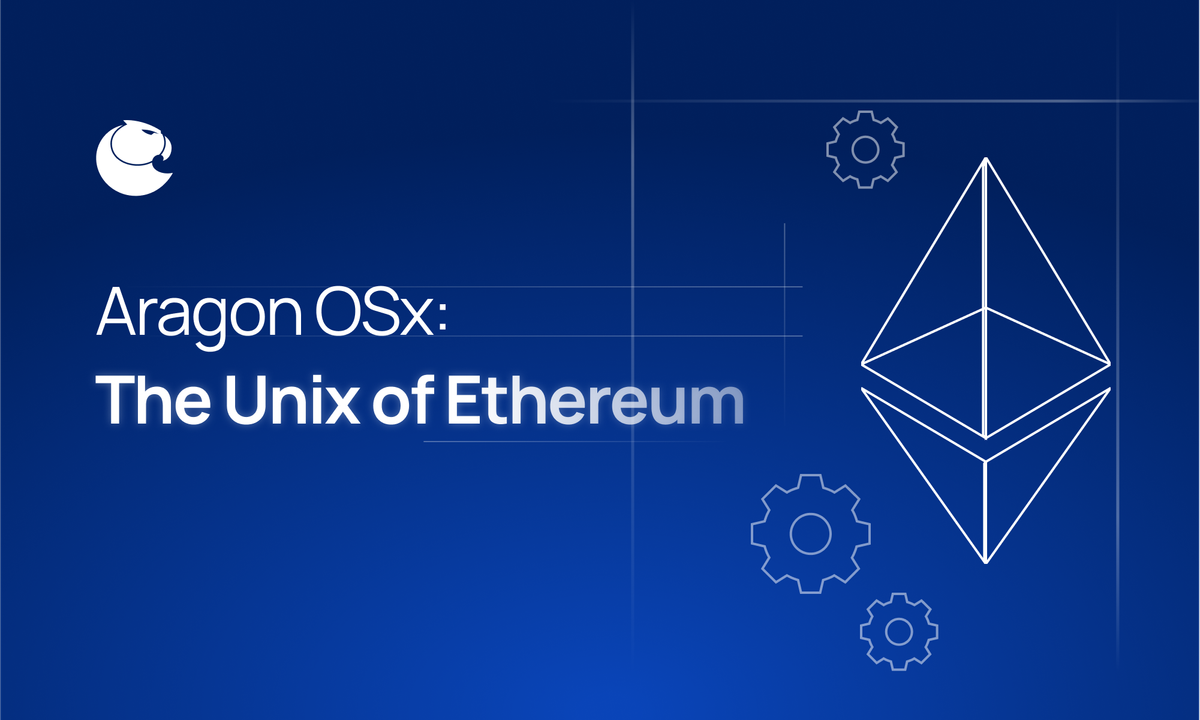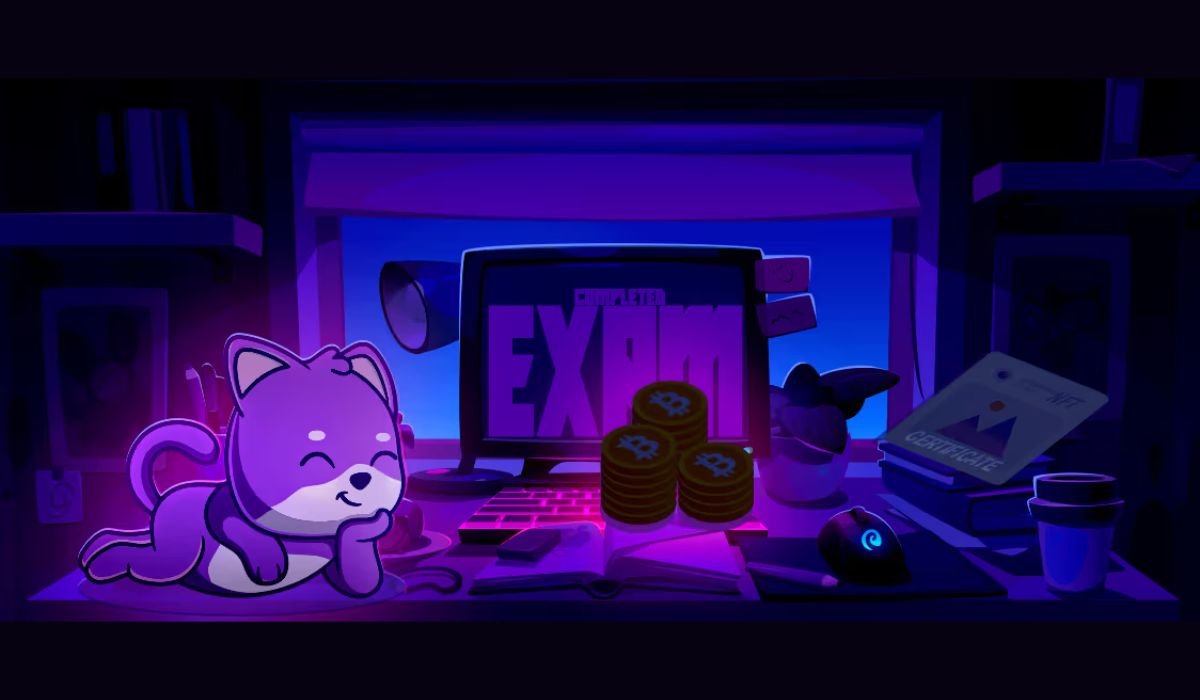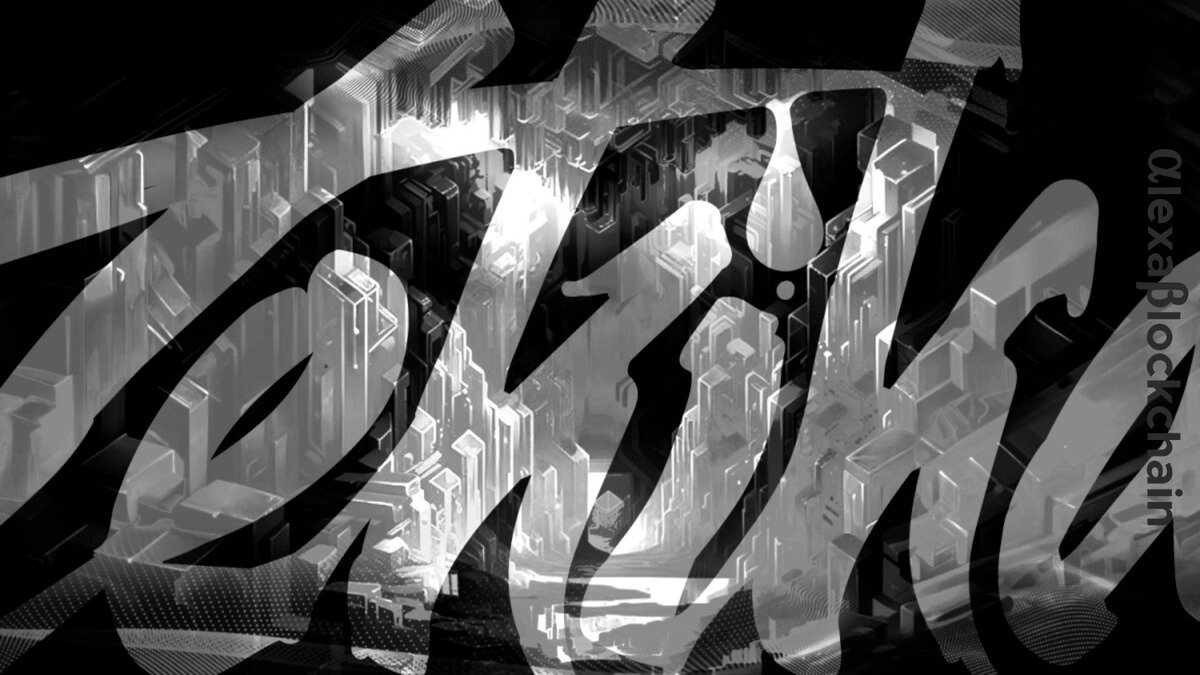Aragon OSx: Unix on Ethereum

DAO technology is still in the early adoption stages. Through experimentation, we continue to discover which governance models and best practices are successful and sustainable over the long term.
One of the biggest challenges of DAOs is that because blockchains are immutable records, adaptation and experimentation can be difficult. To solve this problem, many DAOs have run more operations off-chain and rely on a group of trusted actors to execute decisions. However, we believe that for DAOs to be truly unstoppable, they must run on a blockchain.
Building adaptability into the DAO framework is a solution for DAOs that want to run on-chain. and You can adjust governance as you learn and grow. That’s why we’ve deployed Aragon OSx, a new DAO framework. It is built to be lean and modular so that organizations can easily customize and adapt governance.
By following the Unix philosophy and building simple, composable building blocks that can be mixed and matched, organizations can find a solution that works for them and can be changed later as the organization evolves.
Let’s take a look at Aragon OSx, an operating system for DAOs built on the Unix philosophy.
What is an operating system?
First, let’s find out exactly what an operating system is and share how an operating system works with DAO.
An operating system is what makes your computer run. For example, Mac OS is the operating system used by all Mac computers. The operating system acts as an intermediary between the computer’s hardware and software. Essentially, The operating system is a rights management system. Grant permission to programs (apps installed on your computer) to allow them to run. You can have multiple apps installed on your computer at once, and uninstall them when you no longer need them.
The operating system works as follows: At the center is a trusted kernel that provides unrestricted resource access to tools such as camera, microphone, screen, and disk. The kernel is the core component of the operating system and provides complete control over the hardware system.
Then there are several untrusted external programs requesting access to shared resources. The program could be Google Chrome, the Mail app, Discord, or any other application you install on your computer.
Every app you install requires permission from the operating system, and will succeed or fail based on the permissions you set.
Simply put, the operating system manages permissions for untrusted apps.
For example, when you install Discord, you’ll need to give it permission to access your camera and microphone. However, you can choose to block access to these tools.

There is one key element that makes operating systems so efficient. Since the operating system is the core, you don’t need to reinstall the entire OS to perform a single update to your apps. Just update the app itself. This is the main difference between the original AragonOS and the new Aragon OSx.
This means you don’t need to change the operating system itself, just the apps, which are small, modular parts that are easy to change. This makes updating and making changes much easier than it would otherwise be. Did not do it There is a central rights management system.
Before we cover how the DAO operating system works, let’s look at the philosophy behind it.
What is the Unix philosophy?
When building a new operating system for DAO, we needed some guiding principles to help us stay on the right track. So we looked at Unix philosophy.
The Unix philosophy is a set of norms and practices established by developers working on the Unix operating system in the 1970s. This philosophy has become so influential that it has spread beyond developers in the ecosystem to builders across multiple industries. Here are some key aspects of the Unix philosophy we applied to building OSx:
simple
Write a program that does one thing well. Rather than building one monolithic program that does many things and is difficult to change, each program should do one thing well.
Modularity, Combination
Write programs that work together. Because we’re not building a monolithic program, all the little parts have to work together as one big system.
flexibility
Allows functionality to be reused in other situations. If you’re flexible enough, you can reuse the same program in different situations, eliminating the need to create something new each time.
Everything is a file -> Everything is a permission
In Unix, everything is a file. This makes it easy to reuse the same tools and utilities. That’s because you already know what all those tools and utilities need to interact with each other.
Aragon OSx has it all permission. Like the “everything is a file” concept, categorizing things by permissions makes it easier to reuse the same tools and reduces complexity.
Here are some guiding principles from Unix that we’ve applied to OSx:
- one of the right ways to do things: This standardizes best practices so builders don’t get confused by different working styles.
- Be clear about what you do.: There is no hidden magic. Anyone can use, understand, and appreciate this protocol.
- Pay only for the features you actually use: No hidden lumps. Instead of paying for everything, you only pay for gas for the features you use.
- Easy to understand, check and infer.: It helps with the security of the protocol because it is neither complex nor complex.
Now let’s look at how operating system concepts and Unix philosophy were combined to create Aragon OSx.
DAO core in the center, plugins on the edges
In building OSx, we took the approach of adding a trusted kernel at the center and plug-ins at the edges, much like the operating systems that revolutionized computers. And we applied the Unix philosophy on top of that.
We do this through the DAO core internally and through plugins externally.

DAO Core: Permission management for external programs
The DAO core, or vault, holds the DAO’s assets and acts as a trusted kernel. The main function of DAO Core is granting permissions. You need plugins to do complex tasks. It is much safer to keep the core of a DAO simple, because simple programs are safer than complex programs.
However, permission must be granted for the plugin to interact with those assets (e.g. withdraw, exchange, or stake). This setup is like a trusted kernel with external plugins.
In the image below you can see the assets in the DAO treasury such as ETH and DAI. The permission layer separates those assets from the plugins below, which must request access to the DAO to interact with them. Therefore, in order for the ‘revoke’ function to be executed, it must go through a permission layer.
Plugins: External programs that solve small customization problems
What’s on the other side of authority? Plugin.
Plugins are smart contracts external to the DAO that can perform actions on behalf of the DAO only when given permission to do so. The plugin is They are small, configurable building blocks that can be deployed into many different types of organizations. DAO mixes and matches plugins to build whatever type of logic your organization needs.
Some examples of plugins:
- Token Voting Plugin: Allows DAOs to make decisions based on token voting as long as they meet governance thresholds.
- Uniswap plugin: Allows DAOs to swap tokens on Uniswap.
- Governance Token Streaming Plugin: Allows DAOs to stream governance tokens to contributors based on specific qualifications.
Think of plugins as apps that you install and uninstall on your computer. They solve small custom problems. When you need a new solution, you can iterate quickly to install, uninstall, and upgrade apps without having to reinvent the wheel every time.
Plugins are not trustworthy. In other words, it doesn’t matter who created the plugin or what it contains. This is because the plugin has full permissions on the core and is not included in the DAO itself. Just as applications are outside of a computer’s operating system, plugins are outside of the DAO’s core treasury.
This also means that the plugin may be “unplugged” or have its permissions revoked. This is similar to uninstalling an app from your computer. Governance innovation just got easier.
Developers can control their plugins just like they control their apps.
Developers can choose how to design their plugins. The plugin is upgradable, so you can easily change and install new versions. Or, it’s not upgradable, so you can’t change it later.
Just like apps you use on your computer or phone, developers have control over how their plugins are designed.
We’re providing the operating system and plugins for the basic functionality DAO needs to work, but builders like you are extending applications and functionality on top of it!
Aragon OSx enables mutable organization on an immutable blockchain.
The DAO core and its plugin, Aragon OSx, come together to enable mutable organization on an immutable blockchain. Want to start with a multisig DAO, but need to recruit an additional 100 members, launch tokens, and change governance a year later? Simply uninstall the existing governance plugin and install the new plugin. Want to try a new financial management strategy? Install the plugin, see if it’s right for your team, and uninstall it when you’re done.
Building a mutable organization on an immutable blockchain has never been easier. DAOs can easily adapt to your organization by simply installing, uninstalling, and upgrading plugins instead of deploying a new DAO every time you need to evolve.
We believe this will help launch amazing new experiments and allow anyone to experiment with governance at the speed of software.
Anyone can create a plugin. Here’s how to get started:
Are you already imagining what unique governance modules you could build for your DAO? Are you thinking of a unique way to define your membership, manage finances, and conduct voting? You’re lucky because anyone can build a plugin. In fact, many developers like you are already building plugins! You can check the project on the ecosystem page.
Building the plugin is simple, especially with the quick start guide and boilerplate. Check out this guide and video for an overview of how to build a plugin. If you’d like to receive more content like this, join our developer community to stay up to date.
We can’t wait to see what you create!
Want to see the talk that inspired this article? Watch from 3:00:00:



